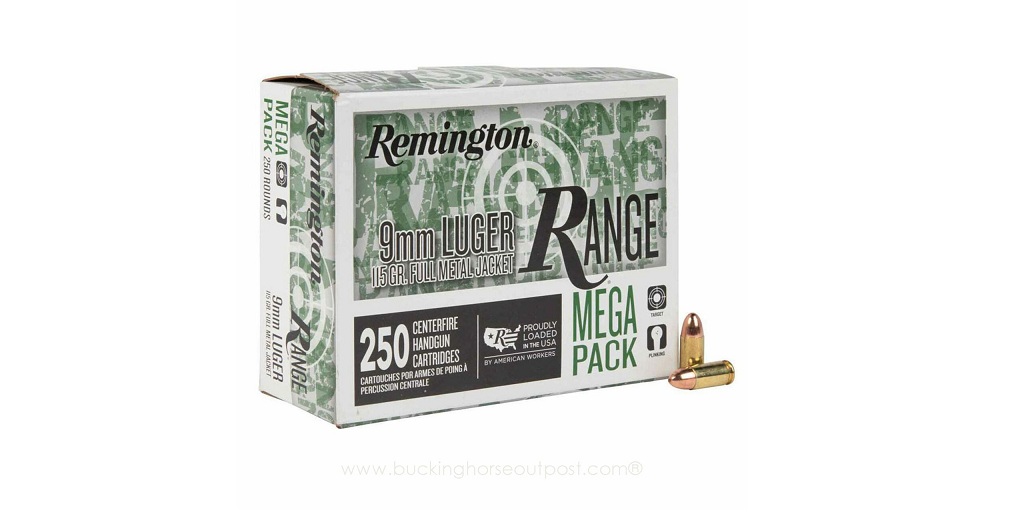A 9mm round like Remington Range 9mm is not by any means a particularly hard-kicking round. That’s actually one of the reasons that 9mm is such a popular choice for competition shooters and those who carry concealed. It’s a light-kicking cartridge with decent ballistic performance.
Specifically, Remington Range 9mm 115 grain loads are fairly light. Producing 335ft/lbs of energy and 1145 FPS at the muzzle. They’re definitely not the hottest 9mm loads out there.
Which is good, as far as recoil is considered.
But if you don’t hold the gun right, it’s all for naught. Limp-wristing, holding the gun too low, and not establishing proper contact between your shooting and support hands with the frame can make a 9mm Luger kick like a 10mm Auto (or much worse).
So let’s take a quick look at how to hold a handgun properly to control recoil, mitigate limp-wristing-induced malfunctions, and improve accuracy.
The first key to controlling recoil and ensuring proper control is to grip the gun high on the frame with the shooting hand. The space between your thumb and forefinger on your shooting hand should come right up to the base of the slide at the back of the pistol.
Wrap all of your fingers firmly around the grip, with your shooting hand’s thumb extending forward along the frame, just underneath the slide. The goal here is to maximize the contact surface area between your hand and the gun.
For your support hand, ditch the “cup-and-saucer” approach. It looks cool, but it’s dated and offers you almost nothing in terms of stability and recoil control.
Instead, use your support hand to cover any exposed portion of the grip that your shooting hand did not cover; angled towards the rear of the grip. Wrap all of your fingers fully around the grip and over your shooting hand. The index finger of your support hand should be pressed firmly up against the front edge or the base of the trigger guard.
The thumb of your support hand should also extend forward alongside the frame and just underneath the slide; right under the thumb of your shooting hand. This will further ensure that you are maximizing surface area contact with the handgun, with a bias towards the rear – which is the direction in which the force of recoil travels.
In this configuration, the pads or heels of your hands should be pressed fairly firmly up against the back of the gun. This will help absorb a large portion of recoil, helping you keep muzzle flip under control.
Also, grip the gun as tightly as is reasonable without straining. Seriously. Hold it hard and tight, as tightly as possible without shaking.
Gripping the gun very hard gives you another serious advantage. It forces you to lock the tendons in your wrists. And since the tendons in your wrists secure the muscles in your arms to your hands, locking them by gripping the gun tightly will give you much greater control over recoil.
Finally – and though this is not directly related to grip – extend your elbows almost fully to the point that you can lock them. There should be a slight (keyword, slight!) bend in your elbows, and they should be tightly in line with your body and below the gun – not out to the sides. Keep tension on the elbow joint (similarly to how you are gripping the gun tightly) to help control recoil.
There is no magic formula for controlling recoil and fighting muzzle flip, but these suggestions can help. Try them the next time you’re shooting 9mm or .45 ACP ammo at the range and see if it doesn’t make a difference.



